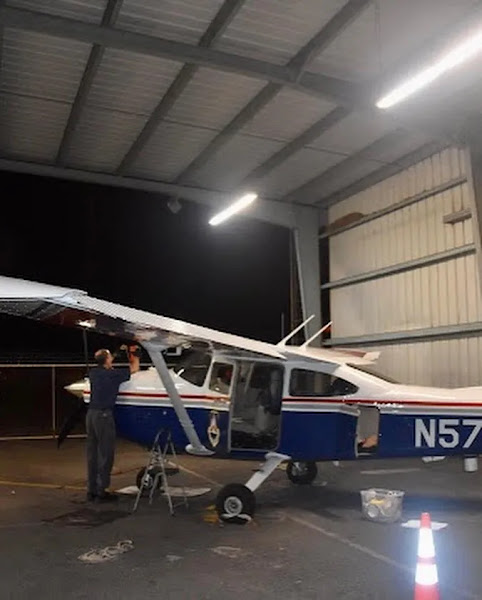The Hawaii Wing of the Civil Air Patrol (CAP) is assisting USGS scientists in following the lava flows from Mauna Loa. On November 28, the volcano on Hawaii's Big Island erupted.
According to CAP Hawaii Wing Commander Colonel Stacy Haruguchi, the CAP flew two flights on Monday, one at dawn and one in the late afternoon.
The first flight, piloted by 1st Lt. John Bassett, took off from Hilo International Airport (PHTO) at 6:45 a.m., accompanied by a volcanologist and CAP photographer, 1st Lt. Susan Bassett. The plane flew over the Mauna Loa peak and the North East Rift Zone.
 |
| The Hawaii Wing of CAP flew two flights next Mauna Loa’s eruption Nov 28. [Courtesy: Civil Air Patrol] |
A momentary flight, additionally piloted by Lt. John Bassett, took off at 4:42 p.m. Second Lt. Jason Dzurizin, an aerial lensman, and 1st Lt. Jason Ozbolt, a mission observer, were also aboard. The purpose of the flight was to collect photos and video as the aircraft circled around the Northeast and Southwest Rift Zones.
The images are assisting the USGS in monitoring the lava flows to see if there is any danger to downslope communities. If the lava catamenia continues, it may block Daniel Grand's path. Inouye Highway, also known as Saddle Road, is a major east-west route that runs across Hawaii Island.
"On Tuesday and Wednesday, there were no requests for flights, in part because the lava menstruum is so close to the highway, allowing scientists and other observers to closely monitor," Haruguchi told FLYING. "We are keeping an eye on the request channels and the daily coordination meetings between Hawaii County, the Hawaii Emergency Management Agency, and the USGS to see if we need to do anything else, and we are ready to go if we need to."
According to Haruguchi, flying near an active volcano is more difficult than regular mountain flight because the aircraft must avoid the ash and fume plume as well as possible flight lava. He says that the dangers are never clear, even when weather overlays are added to ForeFlight, ADS-B, or regular FAA webpages.
"Another risk is the presence of sUAS [pocket-size unmanned aerial systems] being flown into the surface area, which will not show up on ADS-B," he added. "Although unmanned aerial systems (sUAS) are not supposed to be flown into national parks without permission, are not supposed to fly higher than 400 feet above ground level without permission, and are supposed to stay out of the way of manned aircraft, this is never the case." Even if the SUAS remain outside the TFR, they may create a fence line of work-related obstacles for helicopters transporting emergency personnel into and out of the TFR.


